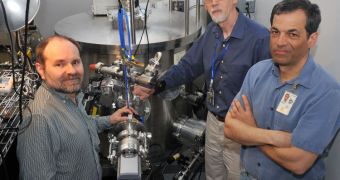A device that has the potential to save lives and bring about a revolution in X-ray astronomy is currently being developed by a team of experts from the American space agency. The group got inspired to create the instrument after studying the underlying structure of lobster eyes.
The new technology closely mimics this structure. Investigators from the NASA Goddard Space Flight Center (GSFC) had a hard time getting it right, but they now say that a demonstrator instrument could be deployed to space within 3 to 4 years.
The International Space Station (ISS) is the targeted destination. The transient X-ray detector would be installed on the outer hull of the orbital outpost, similarly to the Alpha Magnetic Spectrometer detector.
GSFC scientists Jordan Camp, Scott Barthelmy and Gerry Skinner, the leaders of the development efforts, are calling their device the Lobster Transient X-ray Detector (LTXD). Its main ability is to detect transient X-rays at unprecedented levels of accuracy.
These radiations are extremely difficult to capture on tape. They are made up of very high-energy photons, which are produced when black holes and neutron stars merge. Supernova explosions and gamma-ray bursts (GRB) can also produce these energetic light particles.
In addition to its potential for improving X-ray astronomy, the LTXD could also be used as an ammonia detector aboard the ISS. Mission controllers at the NASA Johnson Space Center, in Houston, Texas, say that this is an issue which needs to be addressed in the long run.
A toxic compound of nitrogen and hydrogen, anhydrous ammonia is the main concern for the JSC team. The chemical is absolutely necessary for keeping temperatures constant aboard the space station.
According to Camp, ammonia leaks are detected on the orbital lab even now, but their intensity does not pose any type of danger for astronauts. However, a sudden spike in chemical concentration could result in the death of the entire crew.
The LTXD mimics the structure of lobster eyes in the sense that it is made up of long, narrow cells, each of which is capable of capturing only a small amount of light (or X-rays, in this case). But these small light streams are captured from different angles, and then combined in a single image.
“The innovation is using the lobster technology for a cross-cutting application. We want to use the technology in a new way to promote both astrophysics and human spaceflight,” Camp explains.
“Many people are excited about the possibilities of this quintessentially cross-cutting instrument. With help from our IRAD program, we plan to advance the technology-readiness levels of our proposed instrument. We'll see where it goes. We believe it has great potential,” he concludes.

 14 DAY TRIAL //
14 DAY TRIAL //